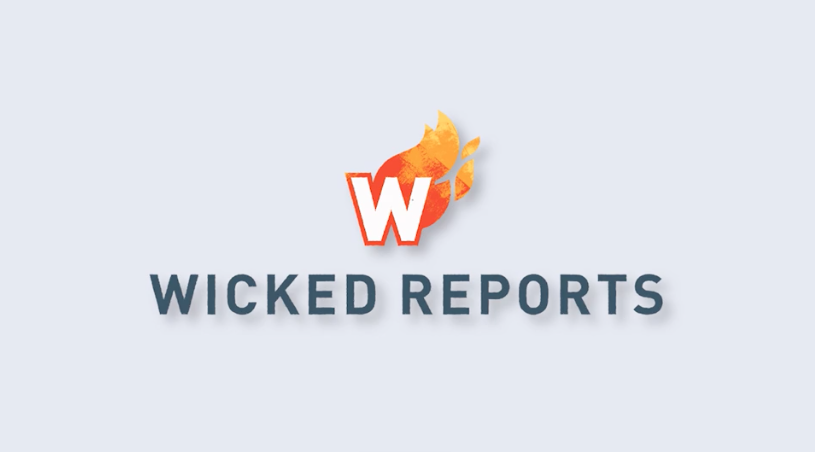If you want to grow your business in the New Year, you’re probably asking these six critical questions:
- Where did my best customers come from?
- How much money do I make from my ads in the first 24 hours? After 7 days? After 30 days?
- Which emails or re-targeting offers produce the most profits?
- Which Facebook audiences spend the most on my products?
- Which keywords produce the biggest ROI?
- Which 20% of my marketing is producing 80% of my income?
These are questions every business person needs to plan effectively. And if you’re going to grow your business, you need answers. Those answers come from clean, clear actionable data that you can used to modify your current marketing programs and plan for future campaigns.
Then why is it so difficult to get them?
Where did all my best customers come from?
Customers often don’t buy right away. They can take weeks or even months before pulling out their card and hitting Buy. In that time you have probably reached out to them multiple times and in several different ways. You’ve used different messages, tested several offers, and tried discounts. But you don’t know which one really worked.
All the data from those programs goes into your CRM but you still need to link marketing program and action, prospect and customer, CRM and Shopify. Only then can you can pinpoint which marketing program got you a customer and brought in revenue.
How much money do I make from my ads in the first 24 hours?
Time is the X-Factor in online marketing. You communicate with your customers over a period of time that varies depending on their needs, their budgets, schedule, and even their fiscal year.
They go from clickers to prospects and from prospects to customers. Eventually some become your best customers. If you don’t know what finally triggered the sale, it’s because you can’t track value (real sales) over that entire customer journey and the complicated sales funnel that results from it.
That makes your tracking data essentially worthless.
The answer to this question tells you which ones go from good to great and what marketing programs made that happen. That’s why Wicked Reports offers a Lead Value Over Time Report. Do more of what works and your business will skyrocket.
Which emails or re-targeting offers produce the most profits?
This sounds simple but most marketers worry about open rates rather than return on investment. Knowing how many people opened and read your emails may make you feel good—and validate your creativity. But open rates typically have nothing to do with which emails made you the most money. And money beats ego any day.
Wicked Reports has an Email ROI Report that answers the profitability question. The data in this report tells you where to invest more time and money to get the most profits. Now you can do more of what works and less of what doesn’t. Focus your email marketing on the most profitable emails and grow your business week over week.
Which Facebook audiences spend the most on my products?
If you’re depending on cost-per-click or cost-per-lead data to make decisions about which Facebook audiences to invest in, you’re losing money. Those numbers are useless unless you know how much money you made from those clicks/leads.
As with emails, focusing on the wrong metrics will cost you in lost time, lost revenue, and reduced profits. Spray-and-pray advertising simply isn’t effective regardless of how many people click on your ads.
But once you know which Facebook audiences actually spend the most money on your products, you can focus your advertising dollars and creativity on those people. The Wicked Reports Facebook ROI Report gives you that information.
Pull back the ads that get high clicks but low revenue and put that money where it will do the most good for your business. The bottom line will thank you.
Which keywords produce the biggest ROI?
Managing keywords can be a time-consuming—and frustrating—exercise. You try to keep track of all the keywords that prospects and customers use to find your website—along with the various misspellings. You monitor what keywords your competitors are using and make sure that you cover those, too.
But keyword values change hour by hour and day by day. You scramble to keep up but wonder whether you’re spending money on the right ones. Are you putting enough in each bucket to stay at the top of the search engine listings? Is a keyword too generic and costing you a lot more than you can afford? Are you missing out on a critical keyword?
The answer to this question clears away all the confusion and frustration. Once you can see which keywords give you the biggest ROI, you can focus on them and improve your response—and your revenue. Plus, you get the most from the money you put into your keyword investments.
Which 20% of my marketing is producing 80% of my income?
Yes, it’s true, a small part of your marketing produces the most productive results. That makes it critical to know what that 20% consists of so you can replicate it and put more effort into reaching your best products.
Drill down to find out who your best customers are, where they came from, how long their customer journey was and what motivated them to buy. Analyze which marketing programs brought in real money and delivered the best return on your investment.
Put all the data together to identify that most valuable 20% and do more of what got them to buy. If that sounds difficult, don’t worry—we do it for you with our ROI Report. When you get on top of how, when and why your customers buy over time you will run your business smarter and more profitably.
Simple steps to profitability
Wicked Reports provides subscription-based, actionable analysis of marketing results at each stage in the customer’s journey. We map marketing programs to sales results and demonstrate the real ROI of your marketing programs.
Armed with this information, you can invest more in what worked and eliminate what didn’t work. Once you get on top of how, when and why your customers buy over time you will run your business smarter and more profitably.
What could be simpler?



